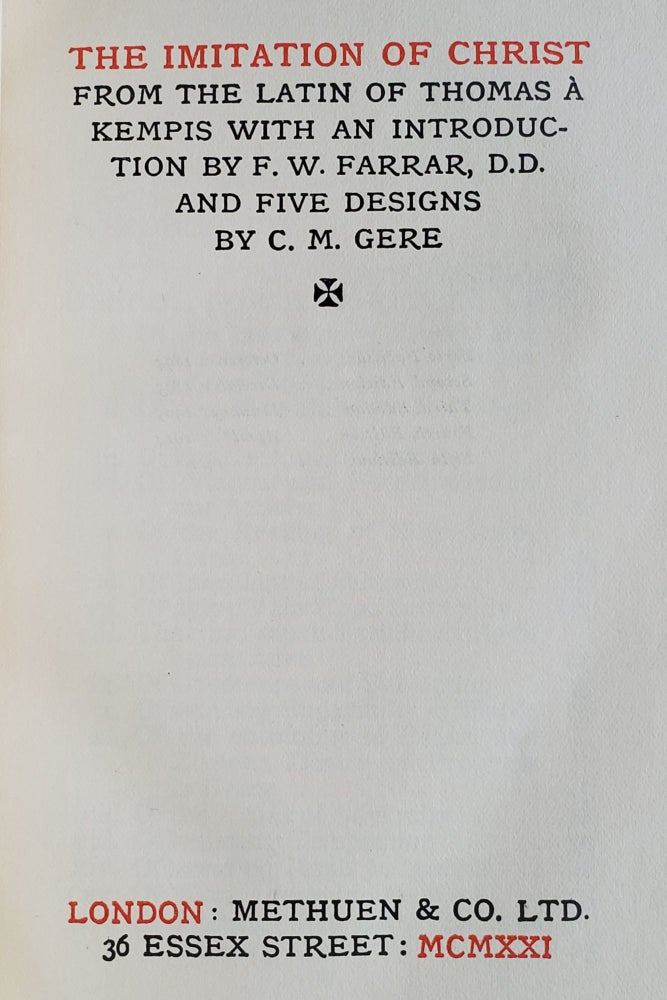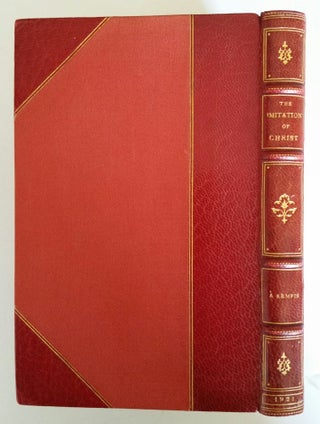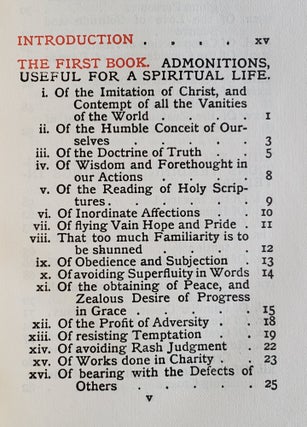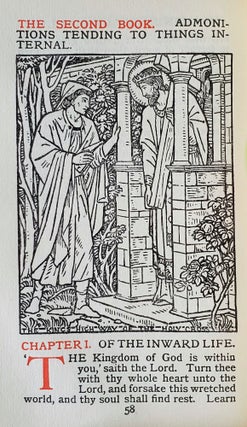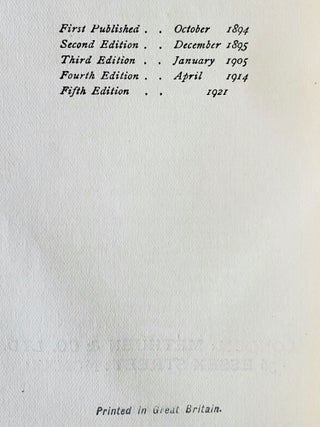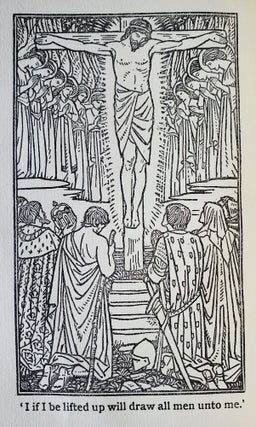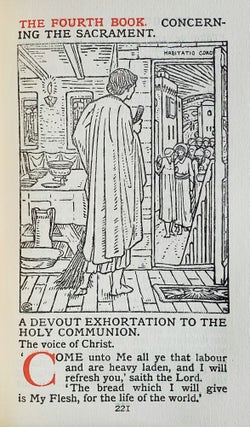The Imitation of Christ; From the Latin of Thomas A Kempis with an Introduction by F.W. Farrar, D.D., and Five Designs by C.M. Gere
London: Methuen & Co. Ltd., 1921. Fifth edition. Contemporary three-quarter crushed red morocco (6 7/8 inches tall), marbled endpapers, top edge gilt. faint spotting to front cloth board. A nearly fine copy. Item #1065
"AT THE DAY OF JUDGEMENT WE SHALL NOT BE ASKED WHAT WE HAVE READ, BUT WHAT WE HAVE DONE"
Illustrated pocket edition of the "most influential handbook of spiritual devotion ever written" (Robert Ellsberg)—in a fine contemporary morocco leather binding by Birdsall.
Written in an Augustinian monastery, Thomas à Kempis's masterpiece of late Medieval piety was "first composed in Latin early in the fifteenth century, the Imitation of Christ was inspired by the Devotio Moderna, a reform movement in Germany and the Low Countries seeking a renewal of piety through worldly detachment: "The model life is the contemplative one. Its aim is to despise the world and to draw near daily to the Kingdom of Heaven, to withdraw one's heart from the love of visible things and to direct one's affections to things invisible" (Frank Magill). First printed in 1894, this edition featured Frederic Farrar's lengthy introductory essay ("The 'De Imitatione Christi'") on the "secret of renunciation." Illustrated with a frontispiece of the Crucifixion ("I if I be lifted up will draw all men unto Me") and four additional "designs" in the Pre-Raphaelite style by Charles M. Gere, a member of the Birmingham Group, and one of the illustrators for William Morris at the Kelmscott Press. The asceticism counselled by the "Imitation of Christ has appealed equally to Catholics and Protestants. Its devoted readers have included Thomas More, Ignatius Loyola, John Wesley, and George Herbert. The popularity of the work owes much to the simple, lapidary directness of its style" (Ellsberg). Fifth edition: first printed in October 1894. This copy bound by Charles Birdsall of Northampton for Charles Scribner's Sons, quite likely for sale in the Scribner's Fifth Avenue bookstore. Magill. Masterpieces of Christian Literature. Ellsberg. All Saints: Daily Reflections on Saints, Prophets, and Witnesses for Our Time.
Price: $350.00

